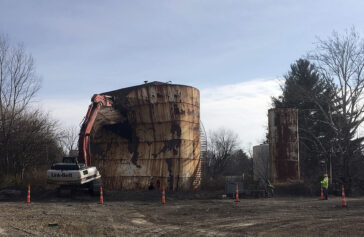Aug. 16, 2018
Best of the States
In Tuskegee, home to black achievement, a Confederate monument endures
The name “Tuskegee, Alabama” evokes images of black empowerment in a once-segregated nation.
Booker T. Washington and George Washington Carver became legends of education at what is now Tuskegee University, and the nation’s first black fighter pilots were known as the Tuskegee Airmen after training in the town during World War II. Michelle Obama gave an impassioned speech there in 2015 while first lady.
So why is there a Confederate monument in the middle of the nearly all-black city?
Birmingham, Ala., correspondent Jay Reeves, using information gleaned from old newspaper accounts, local government records and interviews, reported that the United Daughters of the Confederacy raised money for the monument in the early 1900s. And the white-controlled county gave the heritage group land at the center of town for a whites-only park. It’s there that the statue still stands 109 years later.
Several efforts to relocate the monument have failed through the years, mainly because the Confederate heritage group still owns the land and refuses to move the statue.
In addition to text, Reeves shot photos and located archival images, as well as shooting and editing video for the multiformat package.
For digging in to examine why Confederate monuments are coming down nationwide but not in the historic, majority-black town of Tuskegee, Ala., Reeves wins this week’s Best of the States award.



